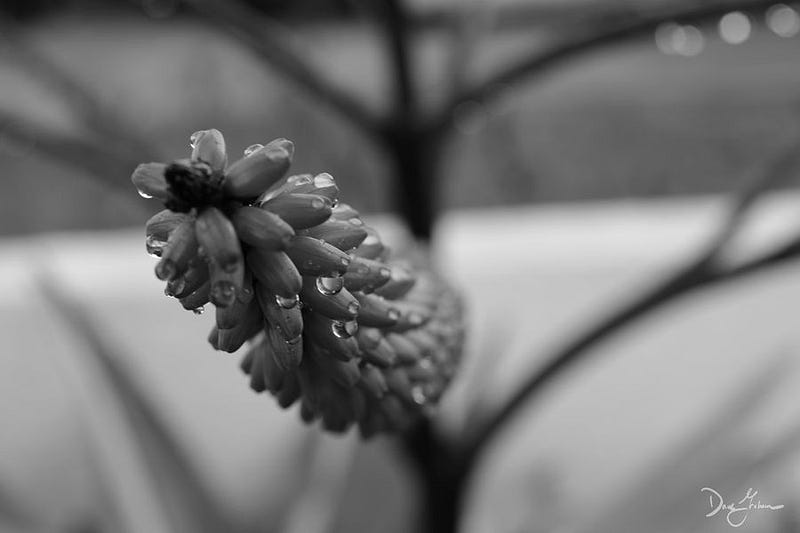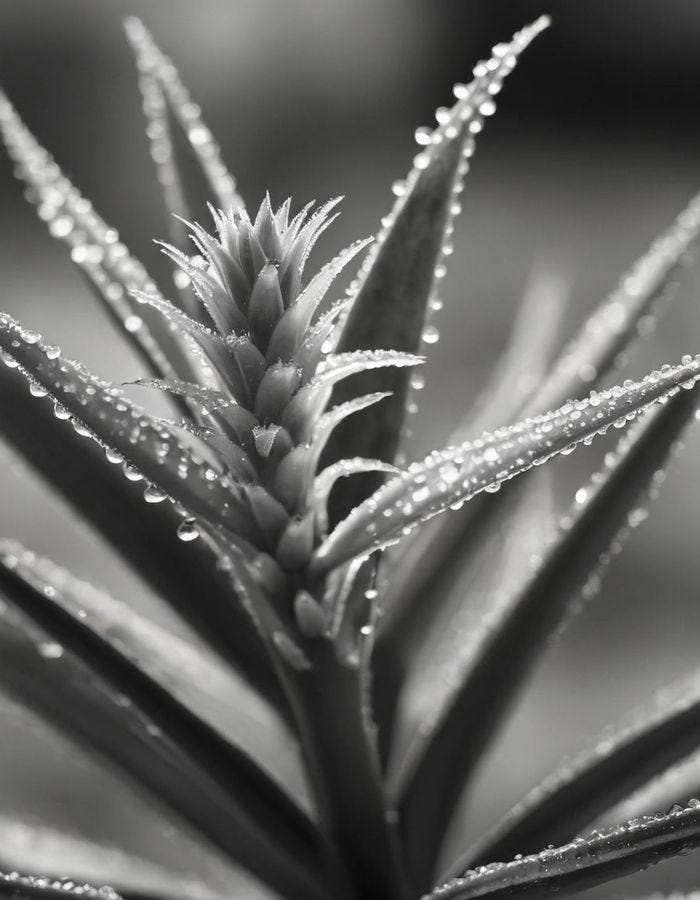Patience in an Age of Convenience

This aloe plant has bedeviled me for quite a few years now. It’s one of those “capture if you can” type objects of interest for me because it forces perspective along a gently curving line. If your aperture is too wide, your depth of field will be too shallow to capture that perception of length this bloom offers. If too narrow, your depth will include too much of the background and none of that pleasing bokeh in the background. Regardless of how you look at it, it’s been a challenge to capture for me.
Last year, I attempted and failed miserably. My hand wasn’t steady enough, my depth of field was wrong, and a whole myriad of other environmental and procedural issues presented themselves in the way. Frustration, dear reader, was the name of the game. Getting back to the laptop and seeing the blurriness, the mistakes, the noise, and the “wrongness” of what I had done was humbling.
I’m reminded of this process over and over for every picture I take. In a conversation over on Threads being held amongst a lot of different photographers, there seems to be an expectation that what we capture is flawless, perfection in the moment of presentation. The fact of the matter is (and my catalogue of back images offers testament to it) that for every great shot, there are probably exponentially more failures and mistakes that you’re not seeing.

We can certainly cheat a little bit by using generative AI and some cleverly crafted sentences to get what we desire like you see right here. It’s breathtaking what these systems can do to create based on our inputs. But, for all of the typing and the two minutes of waiting, I’ve gained nothing; no skill, no experience, no patience. I’ve leaned on a tool of algorithmic complexity to synthesize a vision of the possible.
Patience is a teacher that demands we show up again and again, honing our craft and our souls to that razor edge of near perfection.
This isn’t to say that we’ll ever truly master our arts. I look at the incredible outputs of Japanese craftspersons and marvel at the generations of blood, sweat, and tears poured into something as simple (and as complex) as glass-nibbed pens. Or the years it takes to create soot ink, using feet and hands to mold, shape, and compress viscous liquids to solids. And to hear the “masters” of these arts state that even though they’ve been working on these for 50 years, they still haven’t achieved that aspect of perfection they desire.
I suppose there’s a lesson I’m trying to bring to the fore today: patience. It’s not always about the quick and easy solutions to life’s problems. You can’t run to therapy for a few quick sessions to solve those nagging lifestyle problems you may have. You can’t simply turn on a camera and expect the spirit of Ansel Adams to inhabit your body. We laugh at the pretentiousness of these suggestions but, in a world where solutions are just a simple click away, it’s quite difficult not to engage with them.
I’d suggest that, like my pursuit of the aloe at the top of this post, we take the time to refine ourselves, our crafts, and our capabilities. I’d suggest that practice makes the perfection we seek with the added topping of patience honing it still further.
As you set about closing 2023 off and looking at the goals you wish to accomplish in the new year, try adding patience to that ever-growing list of desirables, wants, and needs you’re compiling. Embrace the opportunities to learn from time and perhaps you too will end up with a chance at redemption.
May it ever be so.





